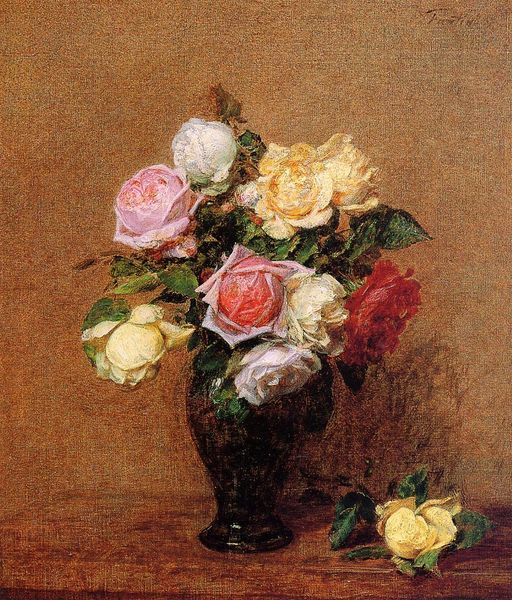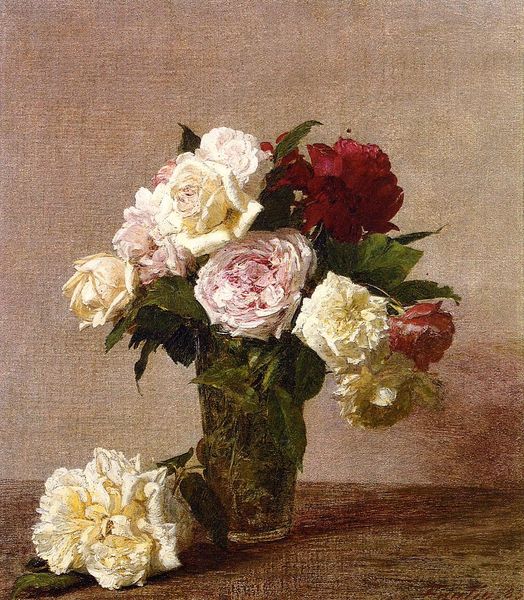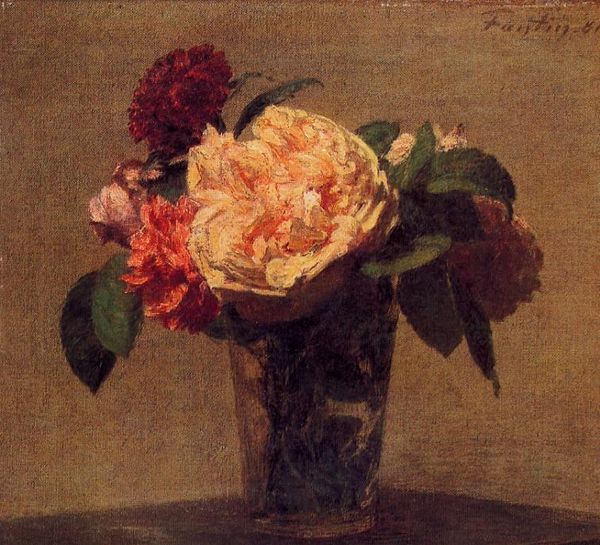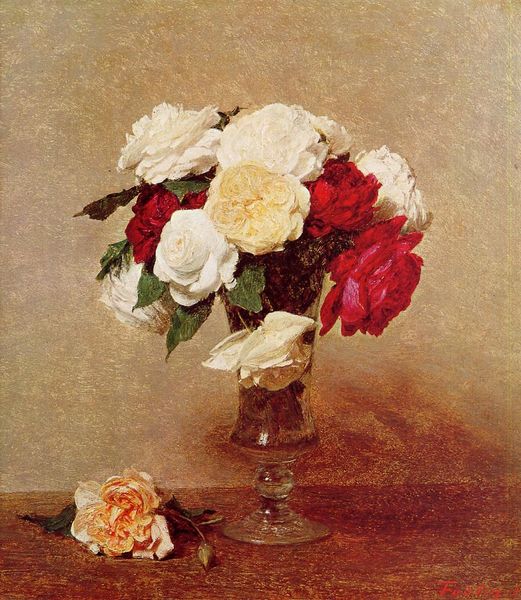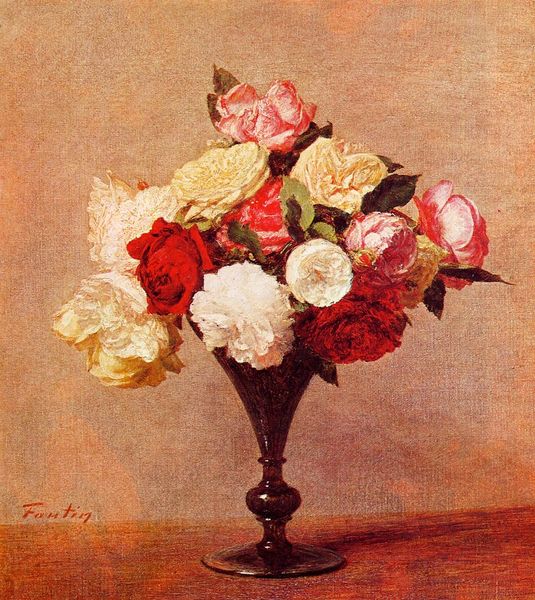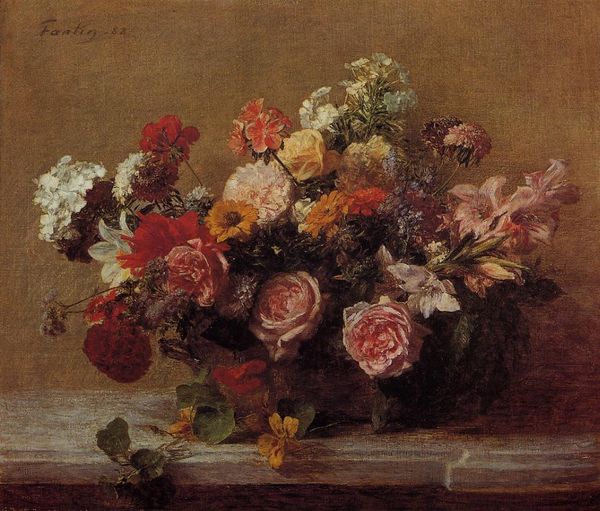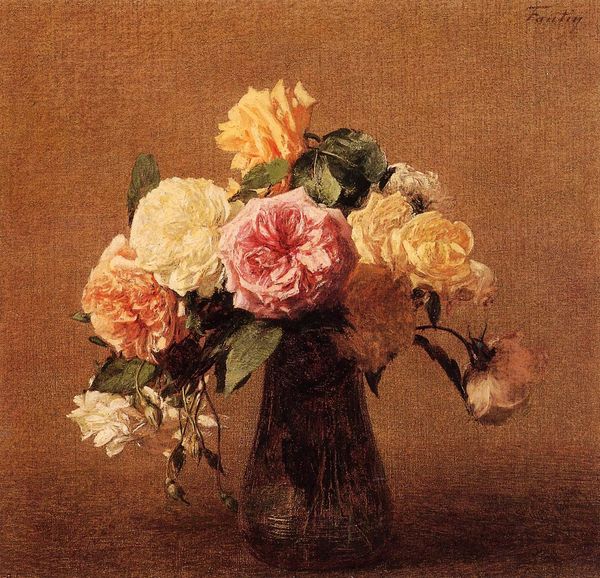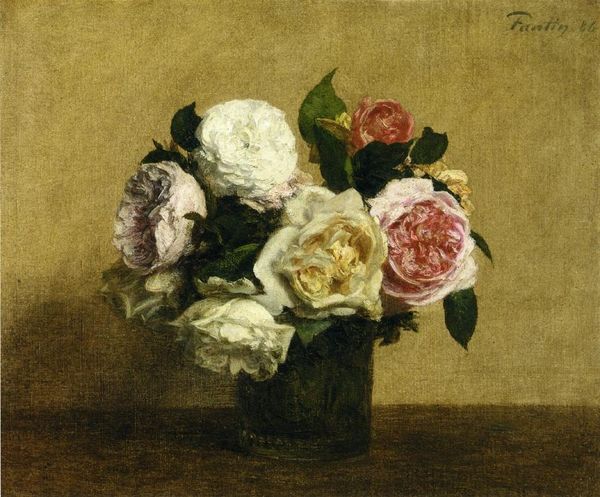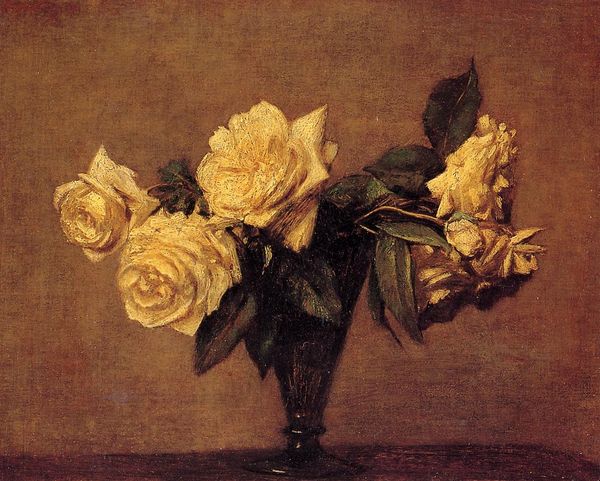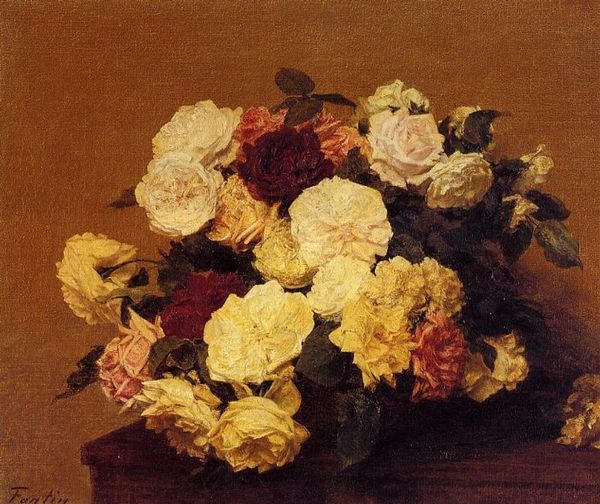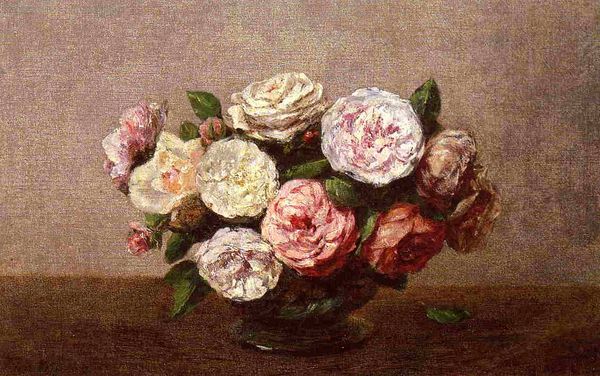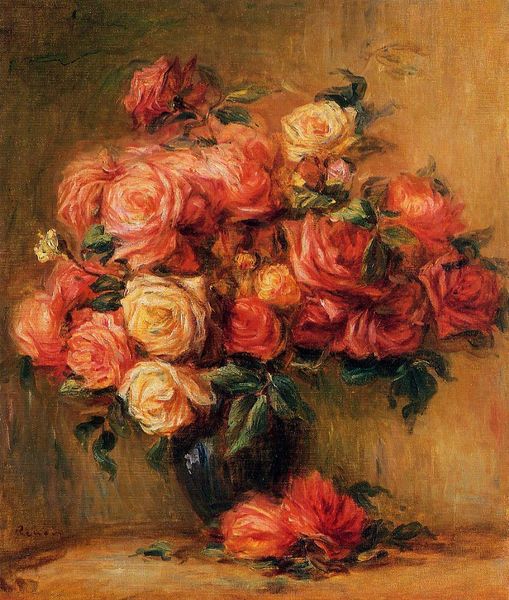
Copyright: Public domain
Curator: Fantin-Latour created this oil painting, “Roses,” in 1884. Let’s delve into its composition and historical implications. Editor: At first glance, there’s an immediate sense of both vibrant life and subtle decay, an interesting dichotomy. It has a nostalgic and melancholic aura, what do you make of the symbolic qualities? Curator: Precisely! Consider the language of flowers in the 19th century; roses had varied meanings depending on their color. A painting solely of roses, particularly during a period of increasing industrialization, spoke volumes. Red roses could signal passion or even mourning in certain contexts, reflecting both desire and societal anxieties regarding class, sexuality, and public space. Editor: The tumbling rose, off on the side, that also has something to say, the symbol of transient beauty and of time moving on. The careful, near-photographic detail Fantin-Latour renders each petal invites contemplation and introspection. Perhaps hinting at a vanitas theme? Curator: The meticulous realism intertwines with romantic idealism, complicating any singular interpretation. Fantin-Latour exhibited frequently at the Salon, catering to bourgeois tastes yet subverting those expectations. These paintings provided not only domestic decorations, but also posed subtle resistance to dominant norms. Roses offered an escape from rigid social roles and oppressive structures. Editor: So it challenges us to engage actively with beauty itself and it represents some societal questions. I see what you mean regarding subversion through seemingly conventional subject matter. The choice of specific colors may allude to a more elaborate symbolic language than meets the casual observer's eye. Curator: In many ways, "Roses" exists as a visual embodiment of these multilayered negotiations, allowing for both escapism and critical engagement. The arrangement is at once timeless and temporally marked; considering its reception tells us about prevailing political winds and unspoken conflicts around gendered visibility. Editor: Yes, it makes you consider what lay beneath the surface in France at that moment in time, the beauty, fragility, and complexities of social convention. A painting packed with meaning! Curator: A subtle assertion of personal expression, mirroring turbulent realities of France’s evolving culture and a visual commentary on both constraint and rebellion during this time.
Comments
No comments
Be the first to comment and join the conversation on the ultimate creative platform.
